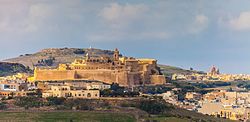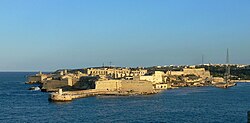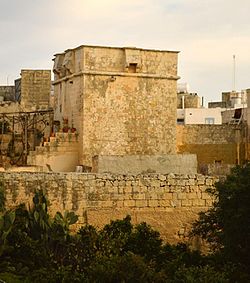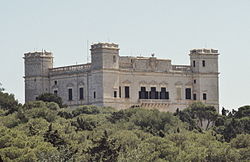Contents
- Prehistoric fortifications
- Walled cities
- Forts
- Towers
- Batteries
- Redoubts
- Entrenchments
- Lines of fortification
- Stop walls
- Fortified houses and privately built towers
- Notes
- References
- External links

This is a list of fortifications of Malta. [1]






































































































































